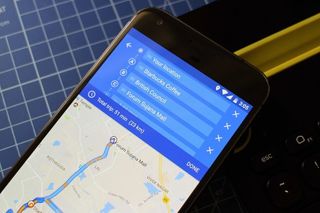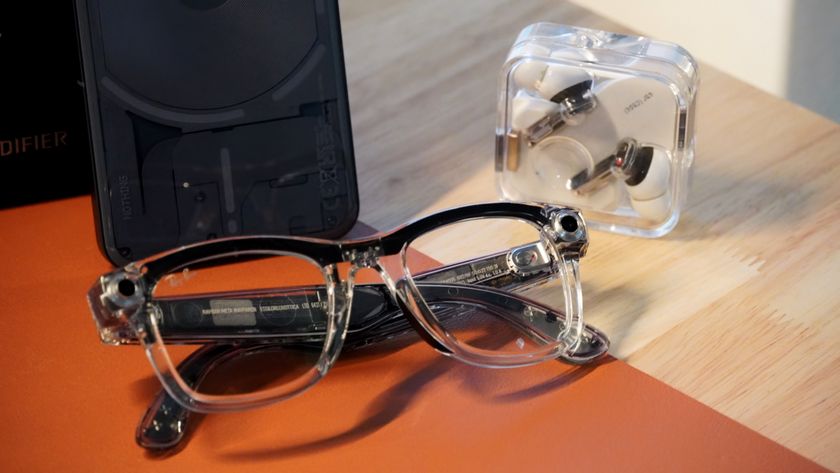Google Maps: Everything you need to know!

Google Maps is a powerful tool that's used by over 1 billion people, and over the years the app has become more efficient at suggesting routes, offering detailed options for public transit, nearby points of interest, and so much more.
Google serves up directions for driving, walking, biking, or public transit. When you select the driving option, you can ask Google to suggest a route that avoids tolls, highways, or ferries. Similarly for public transit, you can choose your preferred mode of transportation.
Its sheer scale means that there are tons of features that aren't immediately visible, and that's where this guide comes in handy. If you're just getting started with Google Maps or are looking to discover new features the service has to offer, read on.
- Save your home and work addresses
- Get driving and walking directions
- See public transit schedules
- Take maps offline
- Add multiple stops to your route
- Share your current location
- Book an Uber
- Use indoor maps
- Create and share lists
- View your location history
- Use two-wheeler mode to find shortcuts
Save your home and work addresses

Setting an address for your home and work should be the first thing you do in Google Maps, as it gives you the ability to quickly navigate to your home or office from your current location. Choosing a custom address also lets you use voice commands for navigation such as "Take me home".
How to save your home and work addresses in Google Maps
Get driving and walking directions

If you're driving a car, exploring a new locale by walking around, cycling to work, or using public transit, Google Maps has you covered. You'll be able to set your preferred mode of transport and select a route from all the available options with ease, with Google showing real-time travel info along with suggested shortcuts to avoid traffic.
How to get driving and walking directions in Google Maps
Be an expert in 5 minutes
Get the latest news from Android Central, your trusted companion in the world of Android
See public transit schedules

Google Maps is a valuable resource if you rely on public transit for your daily commute. The service gives you a detailed list of transit options for your journey —whether it's by bus, train, or ferry — and it offers the ability to set a departure time and see what facilities are available at that time.
How to use Google Maps for public transit
Take maps offline

If you're traveling abroad or heading to a location with limited internet connectivity, a good option is to save that particular area offline so you can get driving directions and view points of interest. Saved areas expire in 30 days, after which you'll have to update them to continue navigating them offline.
How to use Google Maps offline
Add multiple stops to your route

The ability to add multiple stops to your route is easily one of the best features to come to Google Maps. You can set up to nine stops along your route, and Google gives you the overall trip time as well as any delays along your selected course.
How to add multiple stops in Google Maps
Share your current location

Google removed location sharing from Google+ and reintroduced it to Maps back in March, giving you an easy way to share your location with friends and family. You can broadcast your whereabouts for a set amount of time, select approved contacts to share your location with, or just create and share a link with your real-time location information.
How to share your location in Google Maps
Book an Uber

Google Maps lets you book an Uber — along with Lyft or Ola, based on your location — without ever leaving the app. You'll be able to see tariff breakdowns for various tiers, as well as estimated wait times and payment options. You don't even need to have Uber installed on your phone to use the service — you have the option to sign in to the service from Maps.
How to book an Uber in Google Maps
Use indoor maps

Indoor maps take the guesswork out of finding your favorite retail store inside a mall or the exhibit you're looking for in a museum. The service is available in over 25 countries and lets you easily navigate within malls, museums, libraries, or sports venues.
How to use indoor maps in Google Maps
Create and share lists

The ability to create lists is the newest feature addition to Google Maps, and it brings a social element to the navigation service. With lists, you can easily create and share lists of your favorite restaurants, make easy-to-follow lists of places to visit when traveling to a new city, or follow a curated list of places. You can set up lists that are public (viewable by all), private, or those that can be accessed by a unique URL.
How to create and share lists in Google Maps
View your location history

Google Maps has a Timeline feature that lets you browse the places you've visited, categorized by date. The location data is augmented by any photos you've taken at a particular place, as well as travel time and mode of transport. It's a nifty feature if you're interested in looking at your previous travel data, but if you're worried about your privacy (Google tracks everything), you can easily turn it off.
How to view your location history in Google Maps
Use two-wheeler mode to find the fastest routes

Motorcycle mode is a feature designed specifically for the Indian market. The country is the world's largest two-wheeler market, and as such Google is looking to provide a better experience to those on bikes and scooters by offering more optimized directions.
The goal is to suggest routes that are traditionally inaccessible by cars, which will not only cut down on congestion but also provide a shorter commute time for those on motorcycles. To this effect, Google is actively soliciting recommendations from the Indian community in addition to mapping out back alleys.
Two-wheeler mode offers voice prompts and turn-by-turn directions — just like the regular driving mode — and for now the feature is limited to the Indian market.
How do you use Maps?
What Maps feature do you use the most? Is there a particular feature you'd like added to the service? Share your thoughts in the comments below.
Updated December 2017 with details on two-wheeler mode.

Harish Jonnalagadda is Android Central's Senior Editor of Asia. In his current role, he oversees the site's coverage of Chinese phone brands, networking products, and AV gear. He has been testing phones for over a decade, and has extensive experience in mobile hardware and the global semiconductor industry. Contact him on Twitter at @chunkynerd.


